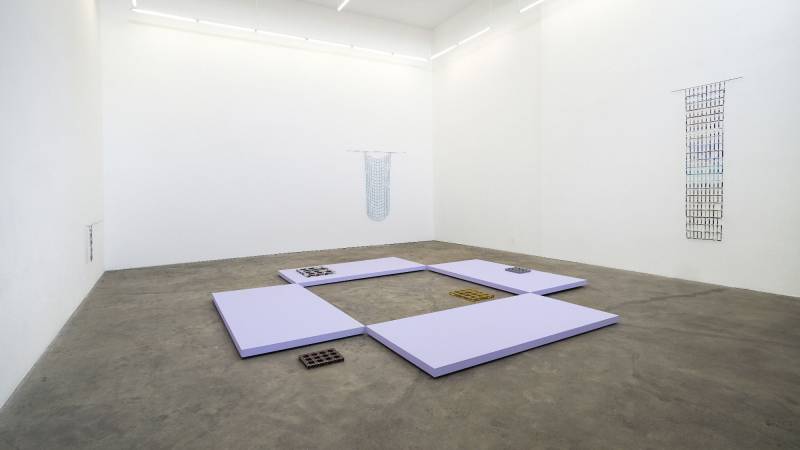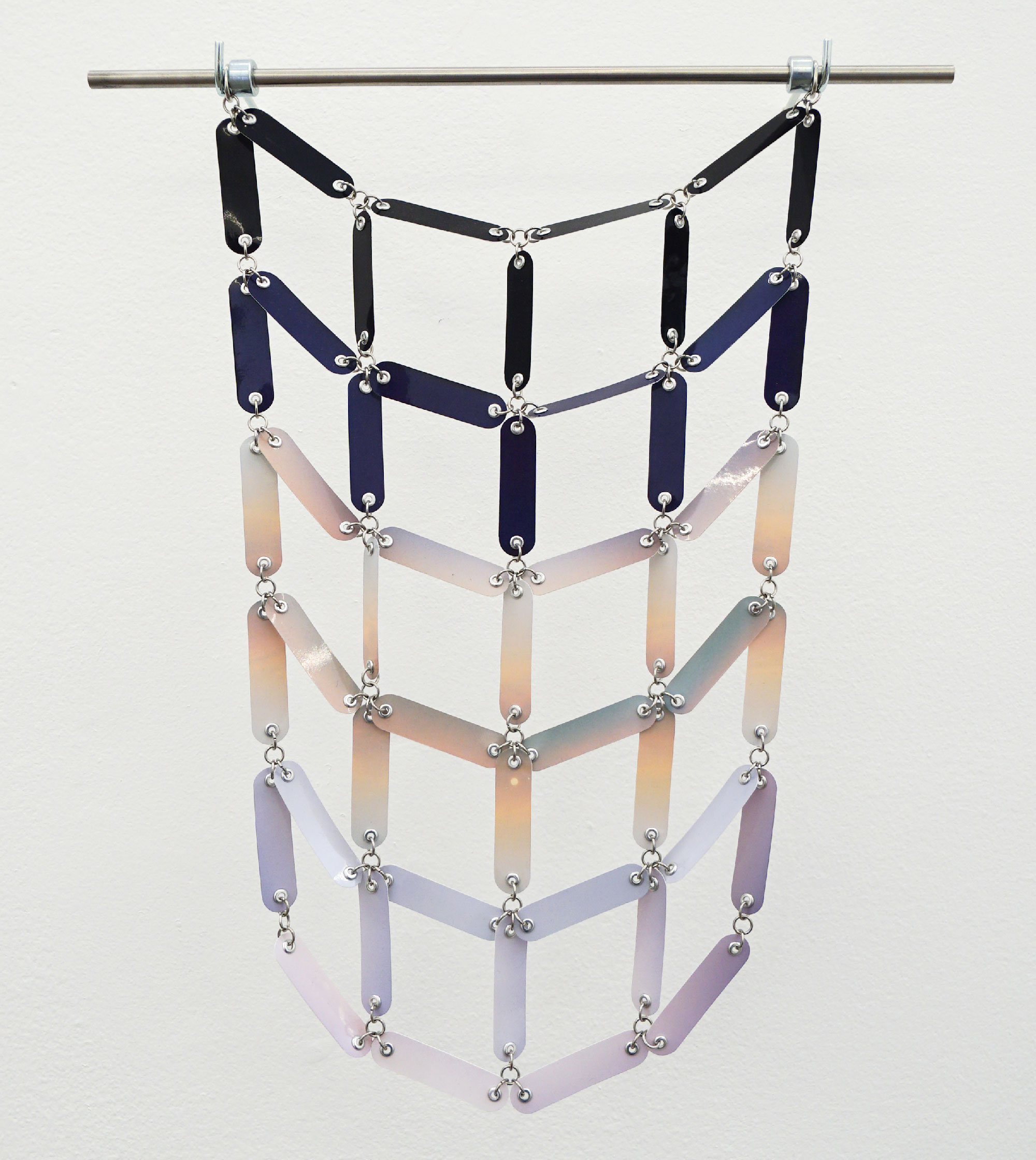It takes a moment to orient yourself upon walking into J Rivera Pansa’s exhibition Imagers at San Francisco’s Et al. gallery. The brightness of the space’s tall white walls almost eclipses the delicate items arranged within it. Presenting works that the transdisciplinary artist has made over the past two years, the current show is their most comprehensive exhibition to date, and demonstrates how the artist’s practice has grown to encompass larger work and new materials. As your eyes adjust, the works assert themselves, reveling quietly in the power of this expanded scale.
Delicate Sculptures Are Quietly Assertive in This Et al. Show

Ringing the walls of the gallery are five hanging grids composed of photo prints and X-ray film that are cut into slender rounded rectangles and then carefully linked like chain mail with metal grommets and rings. The gridded tapestries drape a few inches off the walls. As you move towards them, they stir gently in the disrupted air, giving the impression that the artwork is breathing.
Indeed, in G.M.R. x 220 (2024) Pansa’s use of X-ray film calls to mind imagery of body parts that are normally hidden. While the works made with photographic prints depict change on the scale of nature — through moon rises, agricultural fields and horizons — the shiny gray of the flimsy X-ray film reflects minute changes in the environment of the gallery itself. This piece, especially, makes visible an embodied subjectivity that shifts from moment to moment.

Four low lavender platforms dominate the center of the room and frame the stained glass sculptures carefully placed on and around them. These works take the form of a three-dimensional grid and encase rounded forms of ball chains, copper grain and wheat pennies. It is not clear why these similarly rounded metal forms were chosen, though they do provide a pleasing contrast to the rigid structures that hold them.
As the photos and X-ray material respond to movement, the variously colored glass containers glimmer and reveal the objects inside as the viewer’s position shifts. Two rose-colored works and one yellow piece create a pastel tableau alongside the soft purple of the platforms. The grid is replicated throughout the space.
While the largest of the floor sculptures, A.G.F. x 12 (2024) fits within this system of shapes, its various facets disrupt the show’s otherwise subdued color palette with the red, black, white, and green of the Palestinian flag. In an art world that has not hesitated to censor voices advocating for an end to the siege of Gaza and for Palestinian liberation, Pansa’s choice to include these colors is a brave political statement.

Placed on a platform whose lavender color was once a slur as well as a covert signal of queerness, the gesture also speaks to the dangers of visibility, which can bring as much violence as positive change.
In this light, seemingly formal choices such as the repeated grid and alphanumeric titles can be seen as guides that provide structure whether or not meaning is revealed. The mystery and indeterminacy that suffuses Pansa’s work is not indicative of a lack of depth. Rather, it shields what is most vulnerable.
It feels particularly fitting that Pansa has used chain mail and stained glass in these pieces, both centuries-old craft techniques that evoke histories of protection and faith as well as pain and judgment. Imagers reminds us that we have always found ways to express our complex humanity — no matter how much that humanity feels at odds with a world of binary definitions.
‘Imagers’ is on view at Et al. (2831A Mission St., San Francisco) through July 20, 2024.

